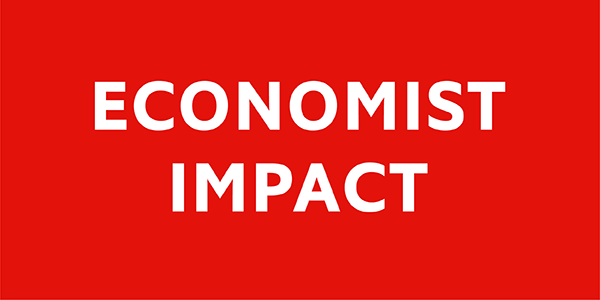Advertisement feature Custom content is written, produced or curated by either a sponsor or by EI Studios, the custom division of Economist Impact. Such placements are clearly labelled as Advertisement, Advertisement feature, Sponsored content, Sponsor perspective, or words to that effect wherever they appear on our website or apps. Neither The Economist news and editorial team, nor Economist Impact’s independent experts, have any involvement in the creation of this content.
Finding stability after volatility
Despite facing significant challenges in 2021—FTX filing for bankruptcy and high-profile cyber hacks and scams causing disintegrating trust—the cryptocurrency market has shown remarkable resilience. Recent trading volumes suggest that the industry is poised for a strong recovery, and experts believe that this trend will continue in the foreseeable future.
As the industry continues to evolve, stakeholders must remain vigilant and proactive in addressing new challenges. At the same time, keeping in mind the lessons learned from the past year will be critical when it comes to regaining trust and working with regulators.
Last year offers several parallels with the global financial crisis of 2008-09. Back then, the financial industry was also heavily scrutinised and critiqued following the collapse of the Lehman Brothers and the subprime mortgage scandal.


Despite the various similarities with other industries and commodities, cryptocurrencies have their own unique challenges. As Annabelle Huang, the managing partner of Amber Group, posits, “just consider the magnitude of these kinds of events and the shortened timeframe. You have to learn so much, so quickly.”

She also points to the fact that last year’s events “challenged the fundamental assumptions that we had as an industry and culminated in a lot of trust being broken”. Distributed ledger technology is supposed to engender trust in a ‘trustless’ environment, yet the cracks started to show as a storm of external factors coalesced.
In a traditional financial environment, such a situation could have seen a backstop or liquidity injection, “but within crypto there’s no saviour, so to speak”. Consequently, “given that this is a nascent industry, with new forms of technology, investors are now definitely a lot more risk averse,” Ms Huang remarks.
As crypto is here to stay, it’s critical that the sector first rebuilds trust with their customers in order to be able to move ahead. To Amber, this has always been a part of their DNA. “Our approach hasn’t really changed,” Ms Huang says.


A part of this involves completely reassessing all operations. “We will review all our assumptions and require more due diligence and more disclosure. We also want to ingrain more traditional financial industry practices, because, to us, it just makes sense,” Ms Huang states.


As one example of this, Ms Huang explains, Amber has launched its first mutual fund. “We have disclosed exactly where the assets are and what exchanges or venues we will use to trade, so therefore, we are giving our clients full disclosure and transparency into how their assets are being managed.”
Another way that confidence can be rebuilt is in regulation. And on this front, Asia-Pacific is leading the way, with Singapore and Japan clearly demonstrating how they will regulate the sector. Hong Kong, meanwhile, recently proposed new rules that required all centralised virtual currency exchanges to be licensed.


There have been changes on the institutional side too, but there appears to be a dichotomy between those that have, or have never, invested in cryptocurrency. For the have-nots, Ms Huang outlines that this situation “has definitely dissuaded many institutional and retail investors from entering into space at the moment.”
On the other hand, she says, “a lot of institutional investors that already hold cryptocurrency are continuing to do so.” This doesn’t mean that they are being apathetic, however. “They might be waiting on the sidelines to see when to invest further or what other sort of digital assets they want to allocate to, but they’re still interested and they’re not leaving the space anytime soon.”


“If anything, we’re seeing an uptake not just in the secondary market this year, but also in the primary markets, where investors are keen to support early stage projects in the hopes of finding the next unicorns or projects that will come out in the next cycle. So I don’t think that [the collapse last year] has completely destroyed that confidence and interest towards crypto, but everyone is far more careful when it comes to due diligence,” Ms Huang continues.
And this should continue to improve as market conditions recover. In April, it was reported that the crypto market had reached a level not seen since mid-2021, with market capitalisation $1.2 trillion and high daily trading volumes.

$1.2 trillion
And, in another development that could further underscore crypto’s recovery this year, two coinciding Ethereum upgrades – known as the Shanghai and Capella upgrades, or Shapella for short – were implemented in April 2023. Among other things, these upgrades allowed withdrawals from the Beacon Chain. This led almost immediately to vast flows of crypto in the following days – Ethereum’s price rose to above $2,100, its highest level since May 2022, and a net of some $375 million worth flowed into exchanges within four days.

With technological upgrades, new international regulations and general market conditions improving, the future of crypto is looking a lot brighter than it did at the beginning of this year. The turmoil of 2022 has brought about a much-needed re-evaluation of the industry, which can only stand to make it stronger in the long term.
“Last year was difficult not just for crypto, but also various other industries and asset classes,” Ms Huang says “But we were able to survive, and now we can continue to commit to our customers and to our clients.”
Ms Huang concludes that it is time to look forward. “We at Amber Group are very hopeful for the new era,” she says.


 1
1
 2
2
 3
3
 4
4
 5
5
 6
6
 7
7
 8
8
 9
9
 10
10
 11
11
 12
12
 13
13
 14
14
 15
15
 16
16
 17
17
 18
18
 19
19
 20
20
 21
21

Content from Economist Impact
Whitepaper | Open access: the future of data portability
The importance of data portability for consumers, businesses and societies is growing globally. This report explores the legislative landscape for data portability at present, and examines consumer perceptions regarding data portability and potential data portability models.
Video | Open access: the future of data portability
This video explores the key findings from the programme covering the legislative landscape for data portability at present, and consumer perceptions regarding data portability.
Back to top











